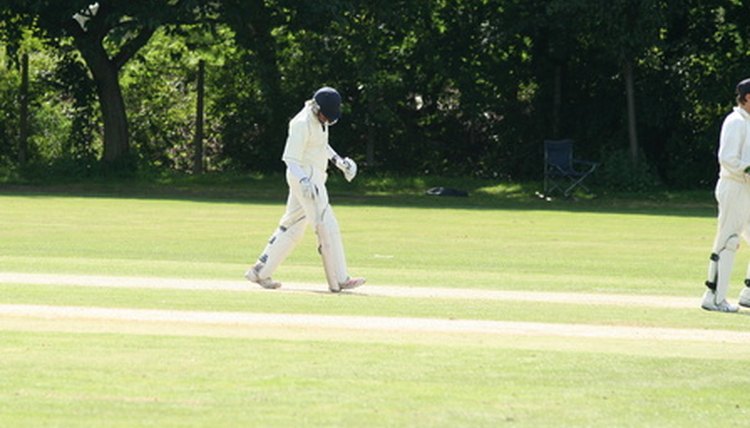Tricks of Hand Cricket

Hand cricket is a popular game among school children, which adapts cricket into a game that can be played without a bat or protective pads. The bowler tosses a tennis ball at the batsman, who would be more aptly named a handsman, as he strikes the ball with the back of his clasped hands instead of a cricket bat.
Batting
Batting in hand cricket is performed by a player standing by the wickets with his hands clasped together. The ball is pitched at the wickets, and the batting player attempts to strike the ball with the back of his lead hand without breaking the grip between the two hands. Because the hands are clasped together, it is important to watch the positioning of the fingers of the rear hand as they wrap around the lead hand. By keeping the fingers out of the way, the batsman can more easily strike the ball with a flat surface, allowing him to drive the ball accurately. By allowing the wrapping fingers to progress around the top of the lead hand, the player creates an uneven surface, which is more ideally suited for shots that put spin on the ball off the hands that don't travel as far but can perplex fielders.
Bowling
The bowler is tasked with attempting to throw the ball past the batsman to hit the wickets, or to cause the batsman to hit into a situation where he can be run out. There are two major factors that the bowler must alter to create tricky shots, and as the balls travel slower than in traditional cricket, it makes the trickery more important. The pitcher can alter the length of his bowls to attempt to fool the batter by changing the point the ball bounces and, in turn, the trajectory of the ball as it reaches the wickets. Additionally, the pitcher can put spin on the ball. The tennis ball is very receptive to spin, making side spins capable of turning sharply, and spins such as top spin, which causes shallow bounces, or backspin, which pops the ball up to more drastically alter the path of the ball.
Other Tips and Tricks
The battle between a bowler and batsman is only the start of the challenge of cricket. Defensively, teams require a reliable wicket keeper who can gather the throws in from fielders in an effort to run out the batsman. Fielders are advised to stay vigilant at all times to give them the best possible chance to react to a hit in time to make a play on the ball and make a catch or help run out the batsman. Batsman, after hitting the ball, must take care to not overexert themselves when scoring after a hit, as it is often better to safely score one fewer and continue batting than to risk being run out. The strategy on attempting to score more on a hit changes based on the game situation, as a team trailing may require some big plays, while a team with a comfortable lead will be content to not be run out.
